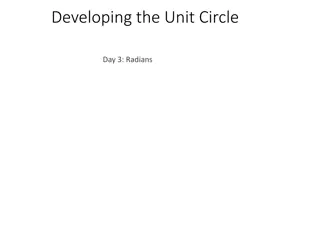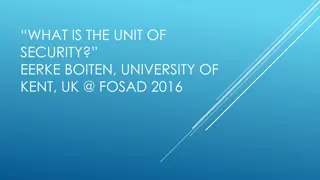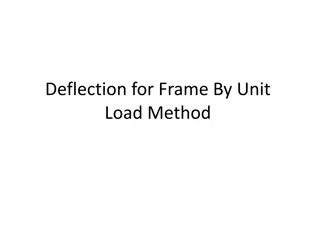
Public Interest Litigation (PIL) and Its Significance in India
Public Interest Litigation (PIL) is a legal mechanism for safeguarding public interests such as pollution control, road safety, and government accountability. Originating in the United States, PIL gained prominence in India in the late 1970s. It serves to provide access to justice, reform laws, raise awareness, and empower marginalized communities. Any citizen can file a PIL petition in the Supreme Court, High Court, or Magistrate's Court. PIL plays a vital role in promoting social justice and holding authorities accountable for the well-being of society.
Uploaded on | 2 Views
Download Presentation

Please find below an Image/Link to download the presentation.
The content on the website is provided AS IS for your information and personal use only. It may not be sold, licensed, or shared on other websites without obtaining consent from the author. If you encounter any issues during the download, it is possible that the publisher has removed the file from their server.
You are allowed to download the files provided on this website for personal or commercial use, subject to the condition that they are used lawfully. All files are the property of their respective owners.
The content on the website is provided AS IS for your information and personal use only. It may not be sold, licensed, or shared on other websites without obtaining consent from the author.
E N D
Presentation Transcript
Welcome Prerna bhati
WHAT IS PIL Public interest Litigation , in simple words, means, litigation filed in a court of law, for the protection of Public Interest , such as Pollution, Terrorism, Road safety, Constructional hazards etc. Any matter where the interest of public at large is affected can be redressed by filing a Public Interest Litigation in a court of law.
ORIGIN OF PUBLIC INTEREST LITIGATION (PIL) The term PIL originated in the United States in the mid-1980s. Since the nineteenth century, various movements in that country had contributed to public interest law, which was part of the legal aid movement. The first legal aid office was established in New York in 1876. In the 1960s the PIL movement began to receive financial support from the office of Economic Opportunity, This encouraged lawyers and public spirited persons to take up cases of the under- privileged and fight against dangers to environment and public health and exploitation of consumers and the weaker sections.
HISTORY OF PIL IN INDIA PIL had begun in India towards the end of 1970s and came into full bloom in the 80s. Justice V.R. Krishna Ayer and Justice PM. Bhagwati, honorable Judges of the Supreme Court of India delivered landmark judgements which opened up new vistas in PIL.
MANY USE OF PIL Provide access to justice Save costs Reform the law Raise awareness Ensure government accountability Empower the disadvantaged
PROCEDURES TO FILE A PIL IN THE COURT Any citizen can approach the court for public case (upon the interest of public) by filing a petition: In Supreme Court under Article 32 of the Constitution In High Court under Article 226 of the Constitution In the Court of Magistrate under Section 133 crPC(code of criminal procedure).
PROCEDURES TO FILE A PIL IN THE COURT(CONT.) At present, a court can treat a letter as a write petition and take action upon it. In such cases, the court has to be satisfied that the write petition complies the following: 1. Where the letter is addressed by the aggrieved person 2. A public spirited individual 3. A social action group for the enforcement of legal or Constitutional rights to any person who, upon poverty or disability, are not able to approach the court for redress.
PIL CAN BE FILED AGAINST Bonded labor matters Neglected children Non-payment of minimum wages to workers and their exploitation Petitions from jails complaining of harassments, release on personal bond, speedy trial as a fundamental right Petition against police for refusing to register a case, harassment at police station
PIL CAN BE FILED AGAINST(CONT.) Petition on harassment of women, rape, kidnapping or murder Petitions on harassment of scheduled caste, scheduled tribe and other economically backward classes. Petitions pertaining to environment pollution, disturbance of ecological balance , maintenance of heritage and culture, forest and wildlife etc. Petitions from riot victims Family pensions
OBJECTIVES OF PIL According to Justice V.R. Krishna Ayer, PIL is a process, of obtaining justice for the people, of voicing people s grievances through the legal process. The aim of PIL is to give to the common people of this country access to the courts to obtain legal redress.
MERITS PIL can extend the benefits of a favorable court order to a large number of people, resources can be pooled and cost can be shared across larger groups. And when the case is in the public interest, there are often a range of organizations that are willing to offer resources and support. Vigilant citizens can find an inexpensive remedy because there is only a nominal rate of court fees. Litigants can focus attention on and achieve results pertaining to larger public issues especially in the field of human rights, consumer welfare and the environment.
DEMERITS Many people started handling PIL as a tool for harassment because frivolous cases can be filed without heavy court fee as compared to private litigations. Due to the flexibility of character of the PIL, the opposite party gets an opportunity to ascertain the precise allegation and respond to specific issues. The judiciary has been criticized due to the overstepping of its jurisdiction and that it is unable to implement its orders effectively. PIL is being misused by the public agitating for private grievances in the grab of public interest by seeking publicity rather than supporting the public cause.
The Present Scenario In the past, many people have tried to misuse the privilege of PUBLIC INTEREST LITIGATION and thus now the court generally require a detailed narration of facts and complaint, & then decide whether to issue notice and call the opposite party. However as there is no statute laying down rules and regulations for a PUBLIC INTEREST LITIGATION Still the court can treat a letter as a PUBLIC INTEREST LITIGATION However the letter should bring the true & clear facts, and if the matter is really an urgent one, the court can treat it is a PUBLIC INTEREST LITIGATION But still it depends upon facts and circumstances, and court has the entire discretion. Reliefs available by Public Interest Litigation There are many kinds of remedies, which can be given in a PUBLIC INTEREST LITIGATION, to secure the public interest, at large. They are:






















